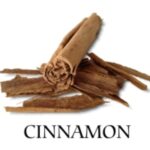Found in the inner bark of the tropical evergreen tree, there are approximately between 50 and 250 different species of cinnamon. A native of Sri Lanka, cinnamon grows best among the coastal strip of Columbo. The two main varieties of cinnamon include cinnamomum cassia and cinnanonuim zeylanicum.
In ancient Egypt, cinnamon was mainly used as medicine and as a flavoring for beverages. One main use of cinnamon was for embalming of the deceased, as body cavities were filled with spices and preserves.
In ancient Rome, Nero, an emperor in first century AD, burned a year’s supply of cinnamon on his wife’s funeral pyre. This was considered an extravagant gesture meant to signify the depths of his loss.
Cinnamon was often paired with ginger, in medieval Europe, as most meals were prepared in a single cauldron and were casseroles containing both meat and fruit. It was also often used as a bridge for flavors.
In Mexico, cinnamon is often paired with chocolate and coffee and brewed as tea. Mexico is considered the largest importer of cinnamon.
In the United States, cinnamon is mostly used in desserts with apples and pears. It is found in curries and pilaus. Sometimes it can be found in mull wines, creams and syrups.
While the demand for cinnamon is very high, it is quite often found in quills or strips of bark rolled one in another. It is pale brown in color and also found in tar-colored bar strips, which are generally thin and spongy. The spongy outer bark is scraped off. However, the best varieties are pale and parchment like in appearance. It is also found in ground form and is distinguished from cassia, another variety, by its lighter color and finer powder.
Cinnamon’s primary chemical constituents include cinnamadehyde, gum, tannin, mamitol, coumarins, and essential oils (aldehydes, eugenol, and pinene.)
Cinnamon has many medicinal purposes including calming a cough, which produces the spitting of a whitish phlegm in the elderly. They can chew or swallow a small pinch of cinnamon for effective relief. This also helps with the problem of cold hands and feet, especially at night.
Just half a teaspoon per day may reduce blood sugar, cholesterol, and triglyceride levels by as much as 20 percent in Type II diabetes patients not taking insulin. Some research seems to point to cinnamon augmenting the action of insulin; however, this has yet to be proven.
Cinnamon is mildly carminative and can be used to treat nausea, flatulence and possibly diarrhea. It increases peripheral blood flow and is a urine stimulant. Cinnamon is also a great essential oil with antibacterial and antifungal qualities.


